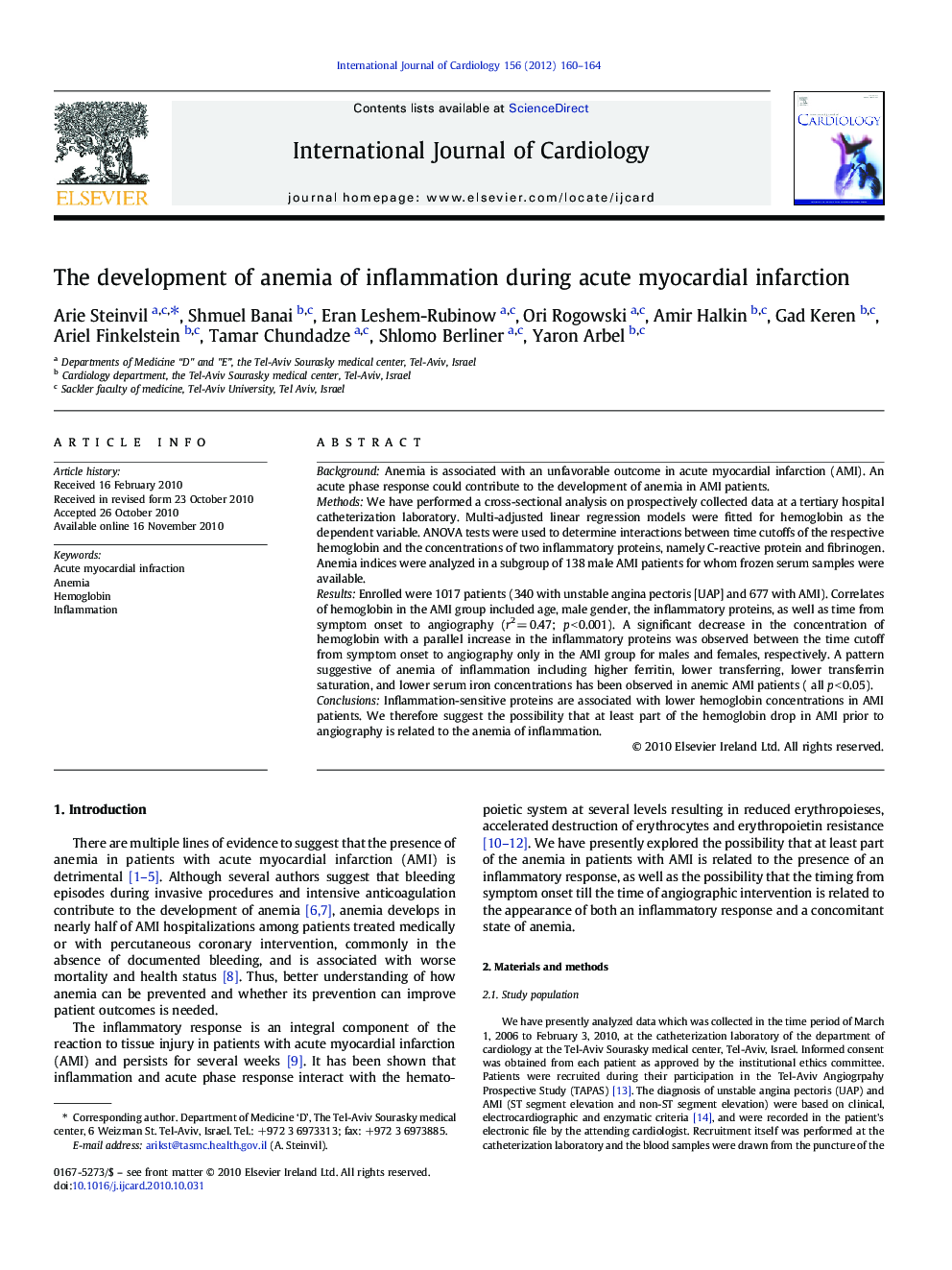| Article ID | Journal | Published Year | Pages | File Type |
|---|---|---|---|---|
| 2930029 | International Journal of Cardiology | 2012 | 5 Pages |
BackgroundAnemia is associated with an unfavorable outcome in acute myocardial infarction (AMI). An acute phase response could contribute to the development of anemia in AMI patients.MethodsWe have performed a cross-sectional analysis on prospectively collected data at a tertiary hospital catheterization laboratory. Multi-adjusted linear regression models were fitted for hemoglobin as the dependent variable. ANOVA tests were used to determine interactions between time cutoffs of the respective hemoglobin and the concentrations of two inflammatory proteins, namely C-reactive protein and fibrinogen. Anemia indices were analyzed in a subgroup of 138 male AMI patients for whom frozen serum samples were available.ResultsEnrolled were 1017 patients (340 with unstable angina pectoris [UAP] and 677 with AMI). Correlates of hemoglobin in the AMI group included age, male gender, the inflammatory proteins, as well as time from symptom onset to angiography (r2 = 0.47; p < 0.001). A significant decrease in the concentration of hemoglobin with a parallel increase in the inflammatory proteins was observed between the time cutoff from symptom onset to angiography only in the AMI group for males and females, respectively. A pattern suggestive of anemia of inflammation including higher ferritin, lower transferring, lower transferrin saturation, and lower serum iron concentrations has been observed in anemic AMI patients ( all p < 0.05).ConclusionsInflammation-sensitive proteins are associated with lower hemoglobin concentrations in AMI patients. We therefore suggest the possibility that at least part of the hemoglobin drop in AMI prior to angiography is related to the anemia of inflammation.
